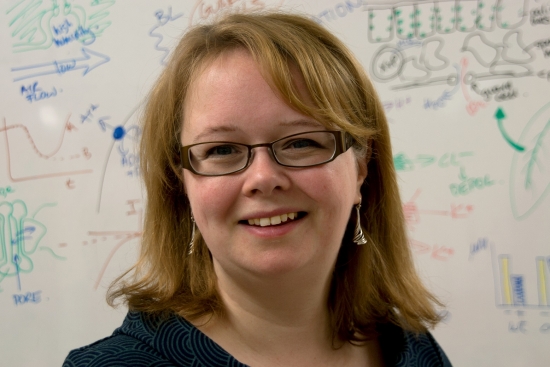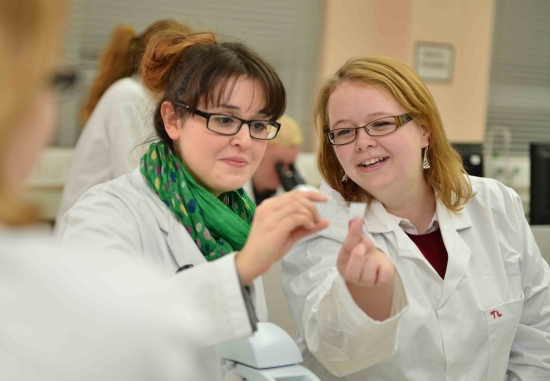By Dr Katharine Hubbard, lecturer in biological sciences, University of Hull, Royal Society of Biology Higher Education Bioscience Teacher of the Year 2016
 Most people who teach would say that they value the views of their students, but how many of us would feel comfortable putting our students in the driving seat and getting them to produce our teaching resources, or even redesign course pedagogy? This is the approach I took in my practical class teaching while I was a Teaching Fellow in the Department of Plant Sciences at the University of Cambridge.
Most people who teach would say that they value the views of their students, but how many of us would feel comfortable putting our students in the driving seat and getting them to produce our teaching resources, or even redesign course pedagogy? This is the approach I took in my practical class teaching while I was a Teaching Fellow in the Department of Plant Sciences at the University of Cambridge.
Using ‘students as producers’ is one interpretation of partnership between students and academics, an increasingly important mechanism of improving student engagement and one of the Higher Education Academy’s strategic themes. Crucially, the student partnership approach requires us to change the position of students from passive consumers of information to active participants who have a genuine role in the educational process. My student partnership project involved working with 4 student interns to produce online quizzes and videos to support first year laboratory class teaching. These resources covered topics including photosynthetic electron transport, enzyme assays and spirometry, and have been used by students and lecturers this academic year.
So why should we get our students to create teaching resources? Firstly, they may have skills that are superior to our own! One of the student interns on my project animates and edits videos as a hobby, so was able to produce videos of a far higher quality than I would ever have been able to. The students were also able to more clearly target where misunderstandings occur – even for practicals where I thought I knew where the pitfalls were, the interns were able to identify additional points where students struggle that I had overlooked. Working with students also identified ways to improve the pedagogy that may not have been identified by academics. I had planned for us to create resources to help students prepare for practicals, but the interns suggested that post-practical consolidation resources and providing effective instant feedback on their understanding would also be valuable, so we extended the project accordingly.
However, perhaps the strongest argument for using this approach is that the process of producing teaching materials is also highly beneficial to the students themselves. As teachers we all know that the best way to understand a new topic is to have to teach it – exactly the same is true for students.
 “It has made me realise that I need to be more inquisitive in regards to my learning and think more about what I learn.” – Student intern
“It has made me realise that I need to be more inquisitive in regards to my learning and think more about what I learn.” – Student intern
“Producing quizzes and animations for the project has also shown me clearly that to test if you really understand a topic, you must be able to explain it to others. As we have said throughout, I don’t think any of us understood the practicals at the time as well as we do now.” – Student intern
Student partnership projects have been described as “troublesome, transformative, irreversible, and integrative” (Cook-Sather 2014). “Transformative” certainly encapsulates the impact that the project has had on my teaching, in terms of both my practice and career development. I now cannot imagine the thought of designing a module without involving students as consultants, and am looking at ways of scaling the students as producers model so that all can benefit even with large class sizes.
The project also changed the way I thought about my own status and value, as teaching fellows often struggle for status and recognition (Hubbard et al., 2015). Co-presenting the project with the interns allowed me to influence thinking about teaching strategy both within and beyond my institution, and raised my profile considerably, culminating with being awarded the Royal Society of Biology HE Bioscience Teacher of the Year award earlier this year. While I am thankful to those who nominated me and to the RSB for recognising my work, the thanks really go to all the undergraduates who showed me that education works best when academics and students work together as true partners. So, if you think you have a teaching activity that could work better think about how you can get students involved in redesigning it – you may be surprised by how much they have to offer.
Nominations for our HE Bioscience Teacher of the Year 2017 are now open – deadline 31 October.

